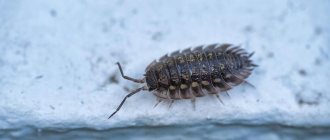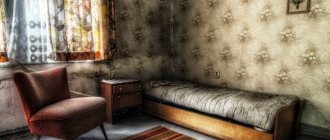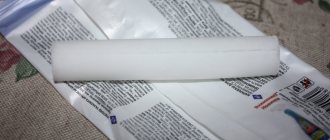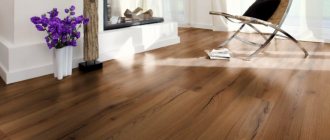What is dust? Perhaps not each of us knows what is included in its composition and how its elements affect our health. You will learn about what dust consists of, why it is dangerous and how to deal with it in our article.
The apartment is the “best” dust collector in the world. Every year, up to 20 kg of dust settles in an ordinary small two-room Khrushchev house. Even a closed, uninhabited room becomes covered with a layer of dust in a short period of time. Where does this “pollutant” come from in our homes? It turns out that the largest percentage (about 70%) of dust reaches us from afar, and only 30 percent is produced due to human activity.
As scientists have found, the Sahara Desert is the most important source of dust for the entire Earth. From its territories, the wind annually raises an average of 150 million tons of dust.
The second no less important and large “dust source” is the Sakurajima volcano, located on Japanese lands. At this time, it is active, so periodically up to 14 million tons of volcanic ash are released into the atmosphere from its vent. And the city, located several kilometers from the volcano, is constantly covered with a layer of dust.
In addition to the largest worldly dust sources on land, there are also seas and oceans. Due to the high percentage of salt content, the world's oceans also deliver a percentage of dust into the air during evaporation, forming clouds. The Earth's atmosphere has not gone unnoticed by space. Thanks to space objects, the mass of the Earth increases by 9 tons due to settled comet and meteorite dust. All these examples of the inanimate world take place in our apartment. Surprisingly, even waste from penguins living in Antarctica can reach our homes. Thus, a wide variety of particles gather together, mix with air and turn into dust.
Dust will stop at nothing, even thousands of kilometers do not frighten it. In order to get into your home, she will go through the most difficult paths and reach her goal.
Dust appears in apartments because some vital processes are constantly taking place in them: small particles flake off from the upper layer of human skin (epidermis), pets leave their fur, food dries out, wakes up, crumbles and also leaves small grains. In addition, dust also comes from outside - its small particles can travel many kilometers before they get into your apartment.
What's in house dust?
Most dust is generated in nature. Volcanoes emit ash and other particulate matter that is carried by the wind. In the air there are grains of sand from deserts, pieces of dried foam from the oceans. There are also elements that appeared due to human activity: paper and fabric fibers, soot and smoke particles are found in the gray coating on surfaces.
What does house dust consist of:
- 30% mineral particles (soil, rocks);
- 20% particles of human and animal epidermis;
- 15% textile and paper fibers;
- 10% plant pollen;
- 5% soot and smoke;
- 20% of elements of unknown origin.
The amount of dust depends on where you live. For example, residents of the lower floors have to clean more often if there is construction going on nearby: cement, sand and other bulk substances are in the air.
Distilled water for humidifier
If a white coating constantly appears on the furniture, there is no point in replacing the air humidifier with a new one. Other activities need to be carried out. For example, change the water to distilled. There is water being poured into the tank. At the same time, it would not be superfluous to install a special filter or introduce a reverse osmosis system in the water supply. In the following paragraphs we will consider these and other methods in more detail.
What is it for and what is better?
Manufacturers of the vast majority of humidifiers strongly recommend using only distilled water.
Distilled water is water purified from various impurities of both organic and inorganic origin.
If you use an unpurified liquid, then all the impurities contained in it will also be broken up by the ultrasonic membrane and released into the air, simultaneously settling on surrounding surfaces and entering the body of nearby people.
Where can I buy it?
You can purchase distilled water at:
- pharmacies;
- automobile stores;
- online stores specializing in distillate delivery.
How to do it yourself: video
The process of creating distilled water - purifying water from impurities (bacteria, viruses, salts and mineral additives) can be divided into three stages:
- preparation of ordinary water;
- distilled production;
- providing storage conditions for the manufactured liquid.
Preparation of water consists of settling it. After two hours of “rest” of the water, compounds of chlorine and hydrogen sulfide will be released into the atmosphere, and after another five to six, heavy metals will settle to the bottom.
After this, you need to place a pumping tube in the container: place one end of it on the bottom, and through the other end, express the lower third.
The production of distillate at home occurs through the evaporation of water. To do this, fill the enamel container halfway with prepared water and place it on the stove. In this case, it is necessary to place an oven rack in the water, and on it - a glass or porcelain plate covered with a dome-shaped lid (place the convex part of the lid at the bottom).
You can speed up the evaporation of water by placing pieces of ice on the lid.
Upon reaching the cold lid, the steam will turn into droplets of purified water, which will then fall along the lid into the glass container.
Prepared water must be stored frozen. To do this, you need to take a suitable container, fill it with distilled liquid and place it in the freezer.
It should be noted that the condition of the water must be checked regularly - it should not be completely frozen. Only ice is suitable for use, since chemicals and salts accumulate in unfrozen water.
If necessary, ice must be thawed and used where necessary - that is, to fill the humidifier container.
How to properly make a distillate is described in detail here:
Is dust hazardous to health?
Dust comes in different sizes. Large ones are retained in the upper respiratory tract and are excreted naturally, without entering the lungs.
Small particles are more dangerous, but the composition of house dust is important. Ordinary dust particles are neutralized by the immune system, while toxic ones destroy lung tissue, causing diseases of the nasal cavity, pharynx, and bronchi. But the most common problem is allergies: if you constantly breathe dust, even a healthy person will develop the disease.
Allergies can be caused by plant pollen, mold and fungal spores, as well as harmful microorganisms - dust mites. The insects themselves are not dangerous to humans, but they produce waste - guanine, which is considered the strongest allergen.
Places where dust accumulates
To protect yourself from diseases, you need regular wet cleaning. Dust particles are distributed unevenly throughout the apartment, so you need to pay attention to the most contaminated places:
Carpets.
The longer the pile, the more dust it absorbs. To avoid breathing in pathogens, shake out and vacuum your carpets periodically.
Decor elements.
Figurines are an excellent surface for microscopic solid particles to settle. It is more difficult to wipe dust from the decor due to the embossed details. To spend less time cleaning, it is better to store figurines and collectibles in closed display cases or cabinets.
Canopies, curtains made of thick fabrics.
Dirt and small street debris settle in textile fibers. To reduce dust, wash your curtains regularly or replace them with blinds or lightweight tulle.
Upholstered furniture, mattresses, bed linen
. More dust and dust mites accumulate in places where household members often rest. Therefore, regularly vacuum upholstered furniture using special attachments. Mattresses can be steamed and bedding should be washed at least once a week. Keep clothes and children's toys clean and throw away unnecessary items, keeping only what is necessary.
Plants.
To prevent gray plaque from appearing on their leaves, wipe them regularly with a damp cloth.
How to wipe dust correctly
Wipe dust from top to bottom. When cleaning, close the doors to the room to prevent dust from flying around the house.
Cleaning rules depend on the type of surface:
- Clean hard, smooth surfaces that are resistant to water with sponges or a damp cloth;
- for screens and monitors you need special wipes; if they are not available, use a dry cloth with soft lint so as not to scratch the surface;
- To wash mirrors and glass, use a special detergent and a dry cloth with soft bristles.
Should I be afraid?
White residue from an air humidifier is fraught with many unpleasant moments, but only two are the most important:
- The need to constantly clean the room. In this case, cleaning is not only wiping off dust, because white plaque settles in a continuous layer on absolutely all surfaces, including any fabric surfaces, which are much more difficult to clean.
- Risk of harm to health. Since the deposition of white plaque occurs on absolutely all surfaces, it is absolutely natural that this plaque gets into the human lungs with the air. And this carries the risk of developing a number of different diseases, including allergic ones.
We recommend: Technical characteristics of a quartz heater - TeplEko company
It is worth saying that numerous studies conducted by foreign scientists have not been able to prove that the use of ultrasonic humidifiers can in any way cause harm to human health. However, safety is ensured only by full compliance with all necessary rules for operating humidifying devices. If you do not follow them - use ordinary water instead of distilled - the health consequences can be negative.
How to get rid of dust
Dust cannot be completely eliminated, but its concentration can be reduced. To do this, you need to approach cleaning systematically. To prevent dirt from flying in from the street, install screens on your windows. Do wet cleaning at least twice a week.
An effective ventilation system or regular ventilation of the room will also help get rid of dust in the air. But this will only help if there are no roads, construction sites or large industries nearby.
Special equipment
An indispensable assistant in the fight against dust is a vacuum cleaner. It effectively collects microscopic particles from the floor, upholstered furniture, and reduces their concentration in the air. It is better to choose a vacuum cleaner with an aqua filter: when dust gets inside the device, it gets wet and remains inside, and purified air comes out. But it is better to avoid devices with fabric garbage bags - almost a third of the garbage ends up back into the room during cleaning.
You can use a steam generator to clean curtains, carpets and upholstered furniture: hot steam cleaning eliminates 99.99% of bacteria and pathogens.
To reduce the concentration of dust in the air, special devices are used.
- Air purifier. The device takes in air and passes it through a special filter. The power of a conventional purifier is enough for one room. For a large area you will need a special air purification system.
- Humidifier. The device does not remove dust, but maintains a humidity level at which dust does not fly, but settles on the surface.
- Ionizer. The device increases the mass of particles, and they settle on the floor, making cleaning easier.
Household chemicals
Special means to combat dust:
- Antistatic agents. Suitable for household appliances: the treated surface does not accumulate static electricity and does not attract dust, which means it stays clean longer.
- Sprays against dust mites. Suitable for textiles, upholstered furniture, pillows and mattresses. A good spray does not leave stains and is safe for human health. However, it is not recommended to use the product more than once every six months.
- Impregnations for upholstered furniture. When the product is applied to the surface, a protective film is formed that prevents the accumulation of dust.
- Wiper. The product is suitable not only for cleaning glass, but also other smooth surfaces - for example, plastic and wood.
Folk remedies
If you don’t trust household chemicals, you can get rid of harmful microorganisms using improvised means. Add 50 mg of vinegar and a couple of drops of essential oil to a glass of warm water. Treat surfaces with a spray bottle: vinegar will destroy mites and bacteria, and oil will give the furniture a pleasant smell.
Here's a way to help get rid of dust on your sofa.
x and armchairs. Take a sheet, wet it with water, cover the furniture and use
Use a beater. This way, all the dust will remain on the fabric and not scatter throughout the room.
Operating principle of the devices
Humidifiers that heat water can leave a white residue on interior items.
The humidifier works based on the effect of evaporation of liquid heated by boiling or ultrasonic exposure. To put the device into operation, first pour clean water into the built-in container, and then plug it into a power outlet. In addition to moisturizing, this device can:
- effectively clean the air from dust and foreign impurities;
- fight electrostatics;
- aromatize the air in the apartment.
In the latter case, a replaceable capsule with aromatic oils is installed in the branded device, allowing you to inhale healing vapors for the body simultaneously with moisturizing.











